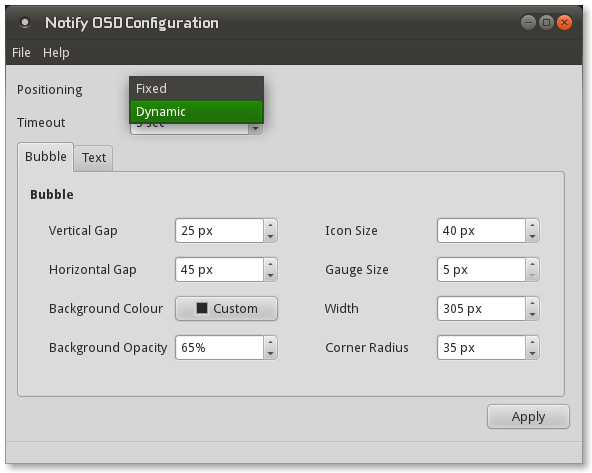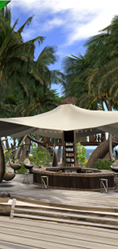The openSUSE Build Service Books have a new chapter called HOWTOs. These will be written for asked questions, the first one existing is how to work best with OBS if you have limited bandwidth. There are multiple methods to avoid large downloads or even uploads of large files (like tar balls) and let just the server do the work…
Archive for February, 2011
LibreOffice 3.3.0 final available for openSUSE
February 9th, 2011 by Petr MladekI’m happy to announce LibreOffice 3.3.0 final packages for openSUSE. They are available in the Build Service LibreOffice:Stable project. They are based on the libreoffice-3.3.0.4 release. Please, look for more details about the openSUSE LibreOffice build on the wiki page.
The openSUSE LO team hopes that you will be happy with this release. Though, any software contains bugs and we kindly ask you to report bugs. It will help us to fix them in the future releases.
False error during update
You might see some installation errors about missing extensions when updating from OpenOffice.org, for example:
ERROR: There is no such extension deployed: com.sun.reportdesigner
Please, ignore them. They are caused by a bug in the OOo packages and can’t be avoided easily. They does not affect the LibreOffice installation!
More known bugs
Other information and plans:
LO switched to a time based schedule and more frequent bug fix releases. The purpose is to keep quality and avoid infinite RC phase at the same time. The idea is that all serious blocker bugs can be found and fixed within few weeks. Then the application is ready for masses who want to enjoy new features and more complicated fixes. The history says that bugs in less typical scenarios are found weeks after the release. Such bugs will be fixed in pure bug fix releases and released few weeks after each other. It means that more conservative people should rather wait for the 3.x.1, 3.x.2, 3.x.3 releases. We hope that it will help all people to get faster what they want.
We are already working on LO-3.3.1 bugfix release. I have just published 3.3.1-rc1. The final 3.3.1 release should be available within 2 weeks.
AppMenu-GTK and Indicator-appmenu
February 7th, 2011 by Nelson MarquesThis is probably one of the most controversial features that has been subject of continuous work from the Ayatana Project. This two pieces of software work as one and allow to export GTK+ application menus through DBus, being the end result: application menus present on the gnome-panel and unity-panel.
This feature requires at least one patch on GTK stack. I’ve talked to Ubuntu devs regarding this patch, and it was told to me that GTK+ upstream had no interest on upstreaming this patch. I’m not the one to comment this move from upstream, but I find it at least interesting that QT has upstreamed an identical patch which includes the same functionality. Since they are competing products (one can replace other totally or partially), such actions only strengthen QT. Adding a bit of speculation and the latest statements from Shuttleworth regarding QT, I wonder if it is to be expecting some ‘wind of change’… who knows?!
For us at openSUSE what does matter is if we can Factor’ize this at least the Menu Proxy patch so we can offer Unity and Indicators at the original form and not crippled. I will request soon this changes to GNOME:Factory and we’ll see what people say, regardless of upstream positions.
This is on-development software, and has some itches, but for the most it works (GTK+ applications), I would expect some polishing in the future from upstream, either way, it’s another option.
Required Patches on GTK:
* 043_ubuntu_menu_proxy.patch
* 072_indicator_menu_update.patch (still figuring if this is actually required and the possible sidekicks of not having it there)
Notify-OSD in openSUSE 11.4
February 5th, 2011 by Nelson MarquesMy first contribution to openSUSE was Notify OSD, which is also a part of the Ayatana Project. On openSUSE version of Notify OSD, I’ve included a small patch made by Roman Sukochev which isn’t was upstreamed but declined on Ubuntu. This patch enabled skinning/theming of the Notification Bubble. Before submitting this package to GNOME:Apps, I’ve talked with Roman which confirmed that he would maintain the patch for upcoming versions of Notify OSD.
This patch handles the skinning of Notify OSD through a text file (~/.notify-osd). I’ve made available an application to configure Notify OSD. This application is known as notifyconf and is available currently on openSUSE:Contrib repositories.
The interface of notifyconf is very user friendly and intuitive. This two packages enable extra functionality not present currently in Ubuntu out of the box. I believe it is important to offer more possibilities to our users.
Installing Notify OSD is done through zypper for example “zypper install notify-osd”. For notifyconf the user is required to install the Contrib repository and install the package ‘notifyconf’ (depends on QT).
Notify OSD replaces the package ‘notification-daemon’ and can be used either in KDE or in GNOME (same for notifyconf). This is optional software for those who want a different desktop experience. I’m thankful to Vincent Untz, Dominique and Peter Linell for allowing this two applications to be a part of the openSUSE Desktop. Also a word of thanks to the Ayatana Project Team for making this software available.
Join us for the first virtual launch party openSUSE 11.4
February 3rd, 2011 by Bruno FriedmannAnnoncing the first virtual launch party
Dear folk, we are organizing a special event for the openSUSE 11.4 launch, and you’re invited. Virtually all of you can participate, and increase the success of it. And spend a good time.
Too soon? Not really, we are in the process to organize also pre-release party, certainly for the RC1 and RC2 launch. So you can practice before the real event. Prepare your environment, and dress your avatars with decent clothes, and gadgets.
We will do our best to welcome you in english, french & greek.
If you want you can also anwser our short pool we are looking about help.
Where?
On secondlife.com, go to area macedonia. at 183,213,21 coordinates
Or fire the search engine, and look after Geekos group, then join that group
When?
During 3 days March 9 10 & 11 2011
Party start at 16:00 UTC ( 8am SL time)
What?
Join our special place build for that event and let’s get
- Dance party
- Free drink
- Goodies
- Wall of pictures
- 11.4 installations movies
- open minded discussions
- Experience exchange
Who?
Your guests would be myself (tigerfoot) & Morgane Marquis.
A team of excellent dj’s as Lillith from Australia, Esquievel from USA, Stefanos from France,
or our great Greeks neighbors
Why?
Hey not so long ago I was kicked by H!
Because it’s a place where people have also fun, and we want to talk with them about the freedom & openSUSE.
Did you never attempt to realize something that has not been made yet?
Just to have a lot of fun! The full explanation Here
How?
To access that 3D virtual world, you need a recent computer 1.5Ghz or +, and good internet access >3500/300bps, and a 3D enabled graphics cards like radeon HD4xxx or more, Nvidia Geforce >9600, Intel > i945 & Intel Extreme.
To be continued
In the next weeks, I will publish an more technical article about how to get 3D world viewer installed on your openSUSE. And we are just finishing the picture gallery about that project which should be online next week (due to FOSDEM) this week-end.
Stay tuned !
A simple clock indicator (indicator-datetime)
February 3rd, 2011 by Nelson MarquesI’ve neglected this indicator since the first day because it drove me into package dependencies that aren’t used in openSUSE (we use YaST and not system-tools-backends and friends).
The documentation of Unity suggests that if no indicators are present, Unity will use the notifications from GNOME. This is very interes
ting, but from the debugging I’ve done from the Unity Panel, I’ve found it it scans the indicators directory and loads whatever it finds there. So it will eventually find something. One of the coolest features in Unity Indicators and the one I’m currently working on, is ‘appmenu-gtk’ which removes the menu from GTK+ applications and displays it on the unity-panel. This is interesting and the behavior is actually a bit different from OSX. The window buttons are also placed very close to this indicator.
If we have such feature enabled, I suppose the panel will always pick up at least one indicator which might endanger the fallback to GNOME notification area. I’ve tested this yet (unity isn’t launched properly yet), but if this happens, it will be wise to have the whole stack of indicators. This explains why I had to build also this clock indicator despite it’s wicked dependencies (liboost, not used on openSUSE).
This is how it looks and minimal functionality is already enabled, though configurations aren’t because I haven’t implemented the whole backend, a
nd if this indicators are to reach Factory (which depends mainly on the patching on GTK+ and GDK Pixbuf), there is the need to pass this packages through SUSE Security Team. If the indicators are only to live on GNOME:Ayatana, then we skip this process (running this package dependencies through SUSE Security Team).
Here’s how it looks the current stack of indicators (there’s a couple more packaged, but I’m not using them at the moment, ex: nm-applet patched, indicator-network and friends).
Within the next days, I will I will make a 1 click installer and run a BETA phase for the Indicators/GNOME2.
Special Thanks to Didier Roche, Jorge Castro and Ken VanDine from Ubuntu/Canonical which have been hyper helpful answering questions and helping me accomplishing and overcoming several issue. Also to Malcolm Lewis (Novell/openSUSE) for keeping up with Compiz and other fixes for the requirements of Unity, and in general to openSUSE GNOME Team for keeping up the motivation and giving some awesome pointers in several GNOME related matters. This work so far has only been possible due to the commitment of all this people.






